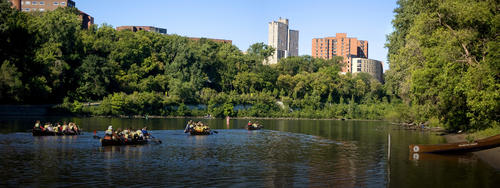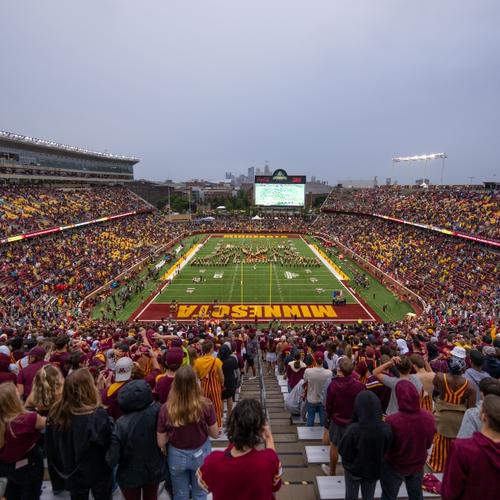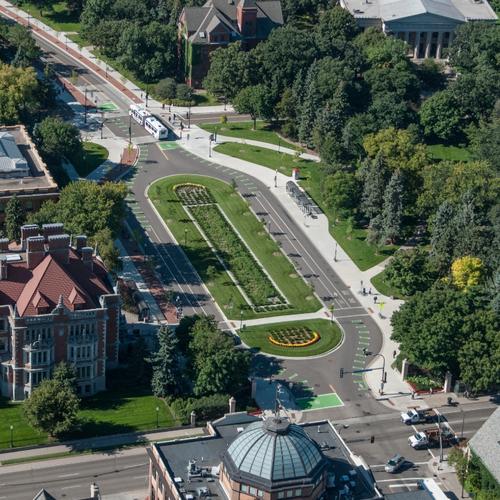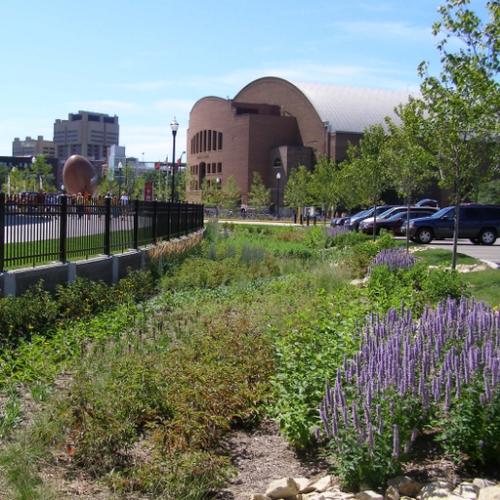
Keeping campus water clean
America’s greatest river splits the University of Minnesota’s Minneapolis campus into east and west banks, with the whole of campus resting within the Mississippi National River & Recreation Area. More than 50 communities rely on the Mississippi for their daily water supply, including Minneapolis and St. Paul. So it’s no surprise that the U of M takes water issues seriously.
Natural resources, including water, were considered under the climate resiliency assessment of the new U of M Twin Cities Climate Action Plan. The University collects and reuses about five million gallons of rainwater every year through a variety of means, including green roofs on buildings that capture rain water to reduce freshwater needs, rain gardens that filter pollutants, and state-of-the-art stormwater systems that manage the rate and quantity of rain water that flows to the Mississippi River.

Research snapshot: Welcome to the State of Water
Water is a vital topic of scholarship across the University. The U of M Water Council is a coalition of faculty, researchers, students, and staff working together to advance water-related research for a sustainable future.
Prairie restoration and rain gardens galore
More than 40 acres of lawns on campus have been converted to prairie, wildflowers, or lower-input turf varieties. One example: A space that was once the site of Norris Hall was recently turned into a natural prairie. The area covers 14,000 square feet and provides habitat for wildlife and native pollinators, while reducing the need for fertilizer and weed control in the area.
Meanwhile, rain gardens across campus reduce runoff to rivers and lakes, act as native pollinator gardens, and are often used for educational purposes. The Rapson Rain Garden is a Living Lab project (see sidebar) designed to turn an empty space into a sustainable development.
For these and other efforts, the U of M Twin Cities campus earned a “Bee Campus USA” designation in 2020.

Start your own Living Lab!
Campus grounds aren’t just for looks. The University’s Living Lab program has transformed the campus into spaces for innovation, testing, demonstration, and learning. The Office of Sustainability invites proposals twice a year from students, faculty, and staff to create living labs. Proposals are provided space and project guidance.

A Big Ten win with stadium stormwater
Huntington Bank Stadium seats more than 50,000 fans for Big Ten football games and other events. What most fans don’t realize is that the stadium was the first LEED (Leadership in Energy and Environmental Design) Certified football stadium in the country, featuring recycled steel, a reflective roof to regulate heat, energy efficient lighting and elevators, and recycling and composting efforts that keep up to 80 percent of all waste produced at events out of landfills. The stadium also includes an extensive stormwater management system in which water from the stadium and surrounding 75 acres flows through rain gardens, bioswales, and a dry pond that filters out pollutants before returning the water to the Mississippi River.

State of the art stormwater control
An impressive feat of engineering lies below the pavement where you enter the U of M’s East Bank from University Avenue: a network of tunnels that ensure stormwater makes its way safely into the Mississippi River instead of flooding the campus.
In 2015, the University repaved Pleasant Street and overhauled the surrounding area, installing cutting-edge improvements that not only absorb as much water as possible, but also filter out pollution. Learn more about stormwater management at the U of M.
Photo credit: image by SRF Consulting Group, Inc.

Build your own rain garden
A rain garden is a planted low area that allows rainwater runoff from hard surfaces like roofs, driveways, walkways, and parking lots to soak in. While it removes pollutants from water, it also prevents erosion, attracts birds and butterflies, and requires little watering and maintenance once established. Make your own rain garden with tips from U of M Extension.
See how the U of M is creating a sustainable campus by